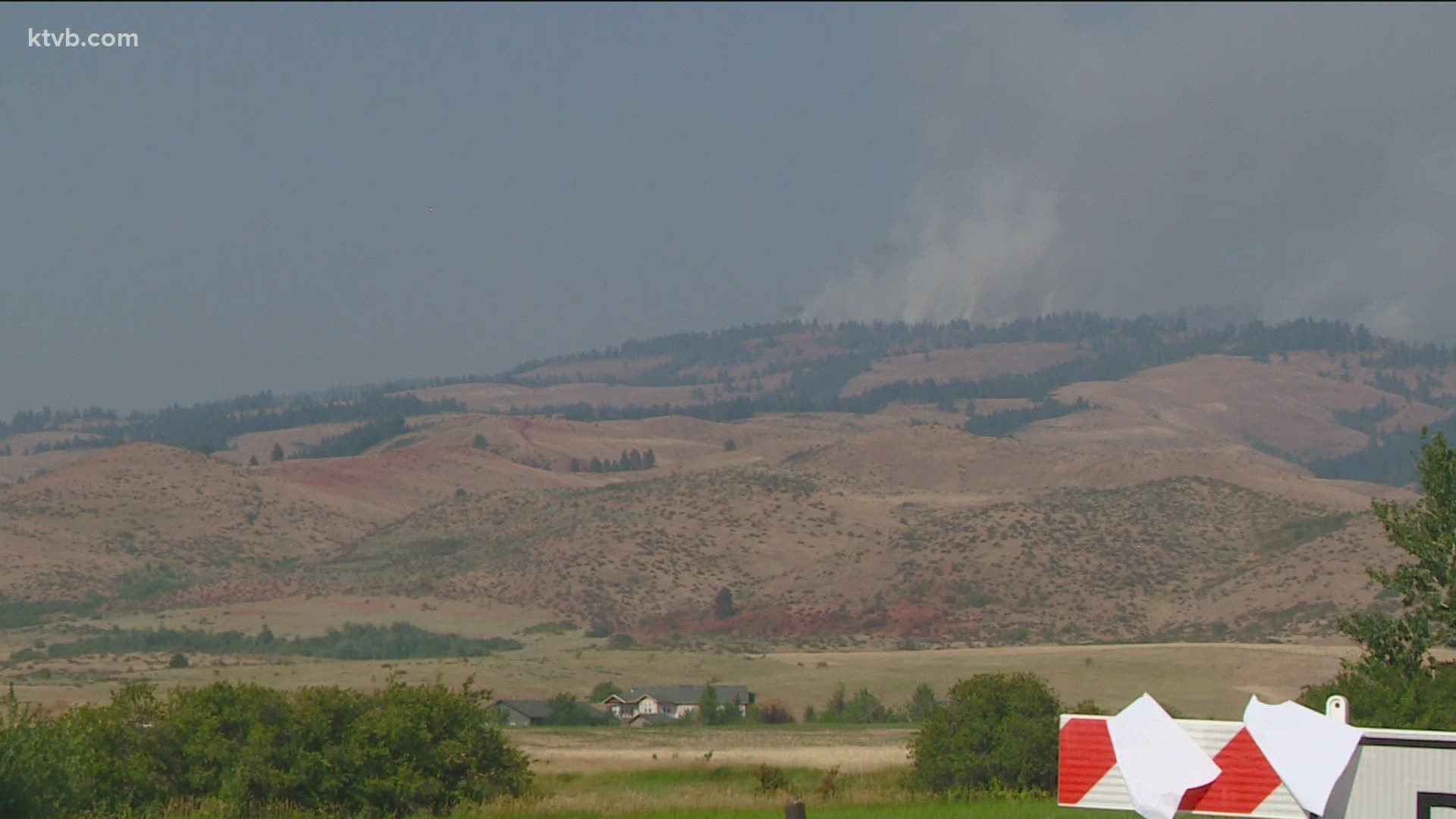BOISE, Idaho — With some of the worst air quality ever, small towns evacuated and nearly all of them preventable, the wildfires that happened in 2018 can offer a history lesson as Idaho becomes warmer.
Tim Barker with the National Weather Service spent most of his summer of 2018 tracking the smoke from fires around southern Idaho, Oregon and California, predicting where it was going based on winds.
"Smoke can travel a long ways, if they're hot in a fire it can travel high up in the atmosphere and that will go travel longer," he explained. "Most of the smoke we are seeing are from fires in Oregon and California that's been blowing up over us over a few days. And also we see the Rattlesnake fire near Riggins."
The Treasure Valley experienced one of the worst summers for air quality due in part to other local fires like the Sharps Fire east of Bellevue, which grew to more than 100 square miles and required a massive effort to contain it.
The small town of Midvale was evacuated after the Keithly Fire burned tens of thousands of acres. The Mesa Fire along Highway 95 near Council was even larger and like the majority of wildfires, was human-caused. It required more than 200 volunteers to stop its spread.
In July of 2018, a fire scorched more than 5,000 off of Highway 55 near Horseshoe Bend, forcing the vital traffic artery to close. It took fire crews several weeks to put out the fire.
The Idaho Department of Lands found that fire to be human-caused, likely started by sparks from a chain dragging behind a vehicle.
Former Boise Fire Chief Dennis Doan said at the time 85% of wildfires are human-caused and it's critical for fire education to increase for motorists.
"Almost all of them are preventable. If you look at a map, BLM and I put one together a few years ago that showed all the starts in Ada County and you could track the roads and that's where all of them are starting," Doan told KTVB.
Watch more on wildfires in the West:
See all of our latest coverage in our YouTube playlist:

